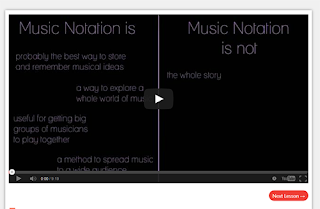 |
| Blended Learning |
Blended
learning, a practice which involves a blend of face to face and online learning
and teaching activities, requires planning and careful thought. Anyone planning
a blended course needs to employ strategies to ensure that the course is a
success.
Simonson,
Smaldino, Albright and Zvacek (2012) describe an unfortunate tendency which
they describe as “shovel ware,” (p 134), i.e. simply placing the face to face
course materials and activities online without any consideration for distance
education pedagogy. A training manager planning to increase the quality of
interaction and communication among learners therefore needs to consider what
practices best suit the online course and which should be retained for face to
face. The University of Central Florida has developed a free open education
resource (OER) to assist persons planning blended classes. A
Blended Learning Toolkit was prepared
by the
University of Central
Florida (UCF) and the
American
Association of State Colleges and Universities (AASCU) with funding from
the
Next Generation
Learning Challenges (NGLC). The
kit suggests
that instructors should avoid meaningless duplication in the section on
building
your own course.
On the matter of
resources, another strategy to consider before converting the program is to
make sure that the company has the legal rights to publish the materials used.
Publishing materials online my expose a company to greater scrutiny and,
depending on the type of institution at which the training manager works, some
fair use policy which enables using some materials for non-profit purposes may
see not apply to corporate training which could be construed as being
ultimately for profit.
A very important
strategy involves considering the learners’ comfort level with the technology
used in the online portion of the course and also considering their access to
and availability of technology equipment to participate.
Aspects of
the original training program could be enhanced in a distance learning format
include
Guided and
focused asynchronous discussions to achieve key objectives. Durrington,
Berryhill, and Swafford (2006) note that creating smaller discussion groups is
likely to encourage deeper discussions and avoid students being overwhelmed.
Communication
is a necessary element for effective collaboration. Creating engaging online
scenarios for group work could also enhance the training experience and improve
communication. Engaging, multimedia
presentations accommodating various learning styles which learners may use at
their own pace and choice is yet another way in which the original training
program may be improved.
In a distance
learning environment a trainer’s role is likely to move away from that of a
custodian and record keeper to more of that of a guide and facilitator. The
popular concept of the “sage on the stage” which may be prevalent in a
primarily lecture-based environment is also likely to change. The asynchronous
nature of distance education which enables learners to ponder their responses
more deeply is likely to result in shared experiences and constructivist
learning especially when dealing with adults who bring their experiences with.
For this trainees who may need special coaching or encouragement the trainer
may also be able to deal with individuals via personal email and thereby become
a catalyst for the gifted and support for the struggling.
To encourage
the trainees to communicate online the trainer could employ several measures. Clearly
outlined expectations via rubrics and other measures are likely to result in a
more confident communicator who knows exactly what is expected. Durrington, Berryhill,
and Swafford (2006) encourage facilitators to maintain an encouraging and
friendly tone. The trainer can set an example as best as possible of good
communication practices. Because the training manger is planning the migration
to a hybrid model, other trainers may be involved. Training these trainers may
be necessary.
Resources
Simonson, M., Smaldino, S., Albright, M., & Zvacek, S. (2012).
Teaching and learning at distance: Foundations of distance education (5th ed.)
Boston, MA: Pearson.



